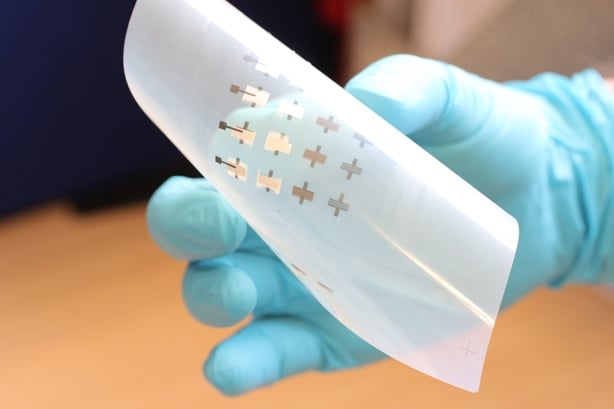Food packaging that sends an alert to your phone when its contents are about to spoil and bottle labels that tell you when wine is at the right temperature could be a step closer as a result of a nanoscience discovery by scientists at Trinity College Dublin.
The researchers have printed transistors made of 2D nanomaterials that have amazing properties and can be produced at low cost.
The scientists at the AMBER materials science centre based at Trinity College Dublin who are behind the development say it could lead to a plethora of exciting new applications.
Previous attempts in recent decades to use carbon based molecules to make printable electronics have struggled because they have proven unstable and have had limited performance.
Efforts to overcome these problems using other materials have also hit manufacturing or performance obstacles.
The printed circuits will enable these devices including solar cells, LEDs, smart labelling, e-passports, bank notes and more to gather, process, display and transmit information.

The team combined graphene nanosheets with tungsten diselenide and boron nitride, two other nanomaterials, to make the transistor.
The scientists used a method developed by Professor Jonathan Coleman, investigator with AMBER and Trinity’s School of Physics, to produce 2D nanomaterials in liquids that can then be printed.
The researchers say their study, published in the journal Science, is important because it shows conducting, semiconducting and insulating 2D nanomaterials can be combined together in complex devices using printing techniques.
“We believe that 2D nanomaterials can compete with the materials currently used for printed electronic,” said Professor Coleman.
“Compared to other materials employed in this field, our 2D nanomaterials have the capability to yield more cost effective and higher performance printed devices.
Further work will now have to be done to bring the performance of the 2D printed transistors up to the level of advanced existing transistors, but the AMBER team is confident it can be done.
The work was done in collaboration with teams in the Netherlands at TU Delft.

